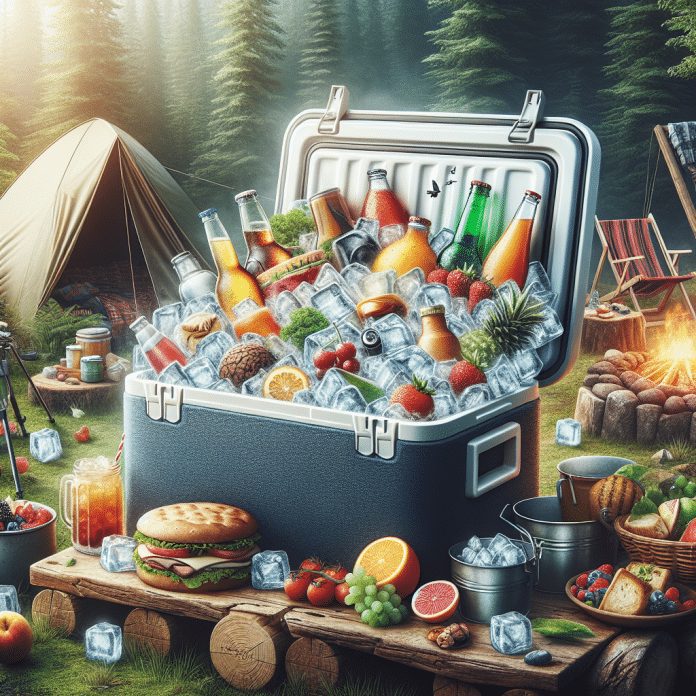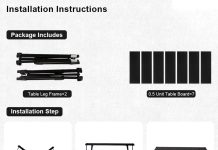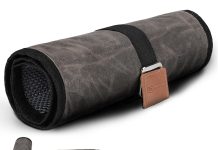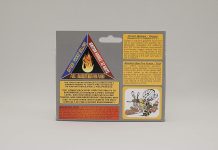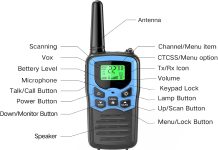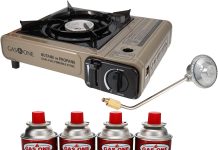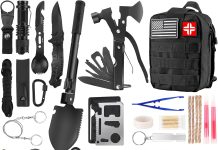Planning a camping trip? Don’t forget to pack a cooler! Whether you prefer a hard-sided or soft cooler, having the ability to keep your food and drinks chilled while out in the great outdoors is a game-changer. Say goodbye to warm beverages and spoiled food, and hello to refreshing drinks and delicious meals with the help of a reliable cooler. With a variety of options to choose from, you can find the perfect cooler to fit your camping needs and keep your goods icy cold throughout your adventure. So, don’t leave home without it and experience the joy of camping with chilled refreshments!
Choosing the Right Cooler
When it comes to choosing the right cooler for your camping adventures, there are a few things to consider. The first decision you’ll need to make is whether you want a hard-sided cooler or a soft-sided cooler. Both options have their benefits, so it’s important to think about your specific needs before making a choice.
Considerations for choosing a cooler
Before diving into the details of hard-sided and soft-sided coolers, it’s important to consider factors such as durability, insulation performance, storage capacity, and portability. Think about how often you plan to use the cooler, the length of your camping trips, and the number of people you’ll be feeding. These considerations will help you determine which type of cooler is right for you.
Hard-sided coolers
Hard-sided coolers are known for their superior insulation capabilities and durability. They are made from durable materials such as rotomolded plastic, making them rugged and long-lasting. Hard-sided coolers typically come with thicker insulation walls, which help maintain cooler temperatures for extended periods of time. They are also more resistant to punctures and can withstand rough handling, making them a great choice for outdoor adventures.
Soft-sided coolers
On the other hand, soft-sided coolers are lightweight and portable, making them easier to carry during camping trips. They are often made from materials like canvas or nylon, which are flexible and can be folded or collapsed when not in use. Soft-sided coolers are a popular choice for day trips or picnics due to their convenience and ease of transportation. While they may not have the same level of insulation as hard-sided coolers, they can still keep your food and drinks cold, especially when combined with ice packs or frozen water bottles.
Cooler Capacity
Determining the necessary cooler capacity is crucial to ensure you have enough space for all your food and drinks during your camping trip. The size of the cooler you choose should be based on factors such as the number of people you’re feeding, the duration of your trip, and the types of food and drinks you plan to bring.
Consider the volume of food and drinks you’ll need to store and aim for a cooler with a capacity slightly larger than your estimated needs. This will allow for extra space to accommodate items such as ice packs or perishable items that require extra cooling. It’s better to have too much space than not enough, as a crowded cooler can compromise its cooling efficiency.
Insulation Material
The insulation material used in a cooler plays a significant role in its performance. Different materials have varying thermal properties, which affect how well the cooler can retain cold temperatures.
Different types of insulation material
The most common insulation materials used in coolers are foam and polyurethane. Foam insulation is lightweight and provides excellent insulation properties, making it a popular choice for both hard-sided and soft-sided coolers. Polyurethane insulation, on the other hand, offers superior insulation performance and is often found in high-end hard-sided coolers.
Other materials, such as fiberglass and vacuum-sealed panels, are used in premium coolers to enhance insulation performance. While these materials may come at a higher cost, they provide exceptional thermal insulation and can keep your food and drinks cold for several days, even in hot weather conditions.
Pros and cons of various insulation materials
Foam insulation is cost-effective and widely available, making it a popular choice for most coolers. It provides decent insulation performance and is suitable for shorter camping trips or day outings. However, foam insulation may not be as effective as other materials in extreme heat or for extended periods.
Polyurethane insulation, on the other hand, offers superior insulation properties and is more efficient at retaining colder temperatures. It is an excellent choice for those planning longer camping trips or for those who frequently camp in hotter climates.
Premium coolers with fiberglass or vacuum-sealed panels offer the highest level of insulation performance. They can keep your food and drinks cold for several days, even in scorching temperatures. However, these coolers often come at a higher price point, so it’s important to consider your budget and needs before investing in one.
Keeping Your Cooler Cold
Properly insulating your cooler is just the first step in keeping your food and drinks cold during your camping trip. There are several other measures you can take to ensure that your cooler maintains its cool temperature for as long as possible.
Pre-cooling your cooler
Before packing your cooler, it’s a good idea to pre-cool it. This involves filling the cooler with ice or ice packs and letting it sit for a while to cool down. By pre-cooling your cooler, you are creating a cold environment that will help maintain the temperature of your food and drinks once they are packed inside.
Packing your cooler
When packing your cooler, it’s important to follow a few guidelines to maximize its efficiency. Start by placing perishable items, such as raw meat or dairy products, at the bottom of the cooler. This will help ensure that these items stay as cold as possible.
Next, organize your items strategically, leaving as little empty space as possible. Fill any gaps with extra ice packs or frozen water bottles to keep the temperature inside the cooler low. Pack items tightly, but be careful not to overstuff the cooler, as this can affect airflow and cooling performance.
Using ice or ice packs
The choice between using ice or ice packs in your cooler depends on personal preference and the specific needs of your camping trip. Ice is readily available and can be easily made at home or purchased. It provides long-lasting cooling power but can lead to unwanted water accumulation if not properly managed.
Ice packs, on the other hand, are reusable and can be refrozen after use. They are generally more convenient and less messy than ice. However, ice packs may not provide the same level of cooling power as ice, so consider using a combination of both if you need your cooler to stay cold for an extended period.
Managing the cooler’s temperature
To maintain the temperature inside your cooler, it’s important to limit exposure to outside heat as much as possible. Avoid placing your cooler directly in the sun or near any heat sources. Instead, keep it in a shaded area or cover it with a blanket or tarp to prevent heat absorption.
Additionally, keeping the cooler closed as much as possible will help maintain its cold temperature. Every time you open the cooler, warm air enters and cold air escapes, reducing the cooler’s overall efficiency. If you need to access items frequently, consider using separate coolers for drinks and frequently used items to minimize the need for opening the main cooler.
Organizing Your Cooler
Properly organizing your cooler can make a big difference in the convenience and functionality of your camping trip. By structuring the contents of your cooler in a thoughtful way, you can easily access items, keep perishable items separate, and maximize the space available.
Using dividers or separate compartments
Using dividers or separate compartments within your cooler can help keep different types of food and drinks organized and prevent cross-contamination. Look for coolers with built-in dividers or consider using removable dividers or plastic containers to create separate sections within the cooler. This will make it easier to find items and prevent them from shifting during transportation.
Arranging items in order of use
When packing your cooler, consider arranging items in the order of use. Start with the items you will need first at the top of the cooler, and place items that will be used later at the bottom. This will minimize the need to dig through the cooler and help maintain its cold temperature when accessing items.
Properly packing perishable items
Perishable items, such as raw meat or dairy products, should be tightly wrapped and placed in waterproof bags or containers to prevent any leakage. Keep them separate from other items and place them at the bottom of the cooler, where they can benefit from the cooler temperature for longer periods.
Important Accessories
Using the right accessories can enhance the functionality and convenience of your cooler during your camping trip. Here are a few accessories that are worth considering:
H2O proof liner bags
Using H2O proof liner bags can help keep your cooler clean and prevent any leaks or spills from seeping into the insulation. They are easy to clean and can be reused for future camping trips.
Cooler locks
Investing in a cooler lock can provide an added layer of security, especially if you’re camping in bear country. Cooler locks can help deter wildlife from accessing your food and drinks, ensuring the safety of both your supplies and the local wildlife.
Thermometers and temperature control tools
Having a thermometer inside your cooler can help you monitor the temperature and make sure it stays within the safe zone. Additionally, consider using temperature control tools such as ice packs or frozen water bottles to help regulate the cooler’s internal temperature.
Cooler cushions and straps for comfortable transportation
If you’ll be carrying your cooler for extended periods, consider investing in cooler cushions and straps to make transportation more comfortable. These accessories can help distribute the weight more evenly and prevent strain on your back and shoulders.
Maintenance and Cleaning
Proper maintenance and cleaning of your cooler will ensure its longevity and optimal performance. Here are a few tips to keep in mind:
Regular cleaning and sanitization
After each use, make sure to thoroughly clean your cooler with mild soap and warm water. This will help remove any food residue or bacteria that may have built up during your camping trip. Proper sanitization is especially important if you plan on using the cooler for different types of food on multiple camping trips.
Proper storage of the cooler
When not in use, store your cooler in a cool, dry place. Avoid storing it in direct sunlight or extreme temperature conditions, as this can affect the integrity of the insulation material. If possible, store the cooler with the lid slightly ajar to allow for airflow, which will help prevent any unwanted odors from developing.
Avoiding direct sunlight exposure
Direct sunlight can quickly heat up a cooler and compromise its cooling efficiency. When setting up camp, make sure to place your cooler in a shaded area or cover it with a blanket or tarp. This will help minimize exposure to the sun and maintain the cooler’s cold temperature for longer periods.
Hard-Sided Coolers vs Soft-Sided Coolers
Both hard-sided and soft-sided coolers have their own advantages and are suited to different camping needs. Here are the key points to consider when choosing between the two:
Advantages of hard-sided coolers
Hard-sided coolers are known for their durability and superior insulation capabilities. They are rugged, resistant to punctures, and can withstand rough handling. Hard-sided coolers are a great choice for those planning longer trips or needing to keep their food and drinks cold for an extended period. They are also ideal for outdoor enthusiasts who require a cooler that can survive in harsh conditions.
Advantages of soft-sided coolers
Soft-sided coolers are more lightweight and portable compared to hard-sided coolers. They are easier to carry and can be folded or collapsed for convenient storage when not in use. Soft-sided coolers are perfect for day trips or picnics, where shorter cooling times are needed. They are also more versatile in terms of shape and size, making it easier to fit them into smaller spaces or backpacks.
Factors to consider when choosing between hard-sided and soft-sided coolers
When deciding between a hard-sided and soft-sided cooler, consider the duration of your camping trips, the level of insulation needed, and the portability requirements. If you are planning on long camping trips or need exceptional insulation, a hard-sided cooler is the better choice. On the other hand, if you prioritize portability and convenience, a soft-sided cooler may be the more suitable option.
Additional Tips for Camping
To make the most of your camping experience and keep your food and drinks chilled, here are a few additional tips:
Freezing food and drinks before packing
To extend the cooling time of your cooler, consider freezing some of the food and drinks before packing them. This not only helps keep the inside of the cooler cold, but it also saves space and reduces the need for extra ice packs.
Using frozen water bottles as ice packs
Rather than using loose ice, consider freezing water bottles and using them as ice packs. Frozen water bottles not only keep your cooler cold, but they also provide a source of drinkable water as they melt.
Draining melted ice
Regularly drain any melted ice or water from your cooler to prevent accumulation. This will help maintain the cooler’s insulation properties and make it easier to access items without getting wet.
Using insulated blankets or towels
Covering your cooler with insulated blankets or towels can provide additional insulation and help maintain the temperature inside. This is especially useful during hot summer months or in areas with high ambient temperatures.
Keeping cooler in a shaded area
Finally, when setting up your campsite, choose a shaded area to keep your cooler. This will help minimize exposure to direct sunlight and maintain a cooler internal temperature. If there is no natural shade available, consider using a sturdy umbrella or a shade tarp to create a shaded spot.
In conclusion, choosing the right cooler for your camping needs is essential for keeping your food and drinks chilled and enjoyable throughout your trip. Consider the factors mentioned above, such as the durability, insulation material, cooler capacity, and portability when making your decision. With the right cooler, proper maintenance, and clever packing, you’ll be well-prepared to keep your camping meals cool and refreshing, no matter where your adventures take you.

